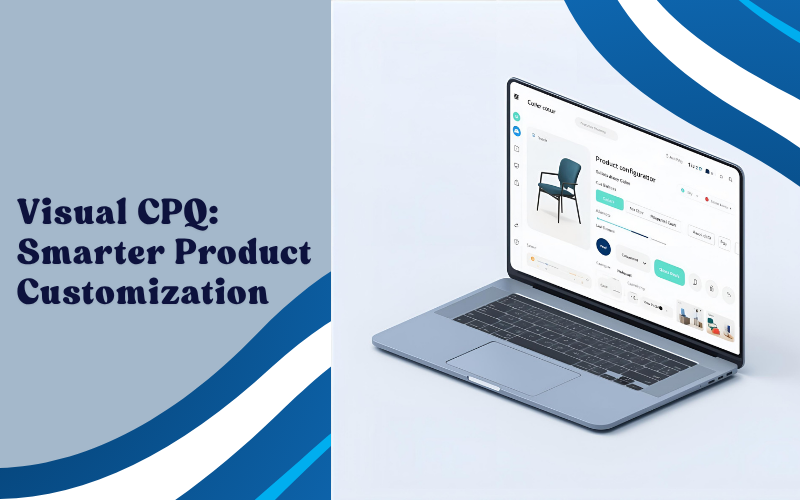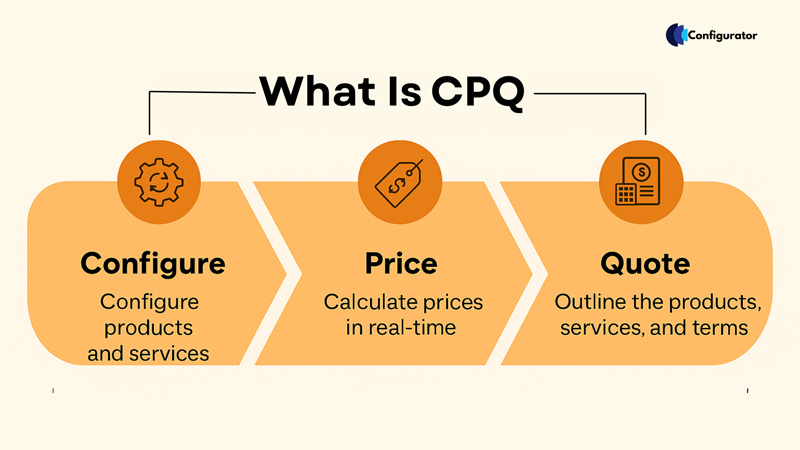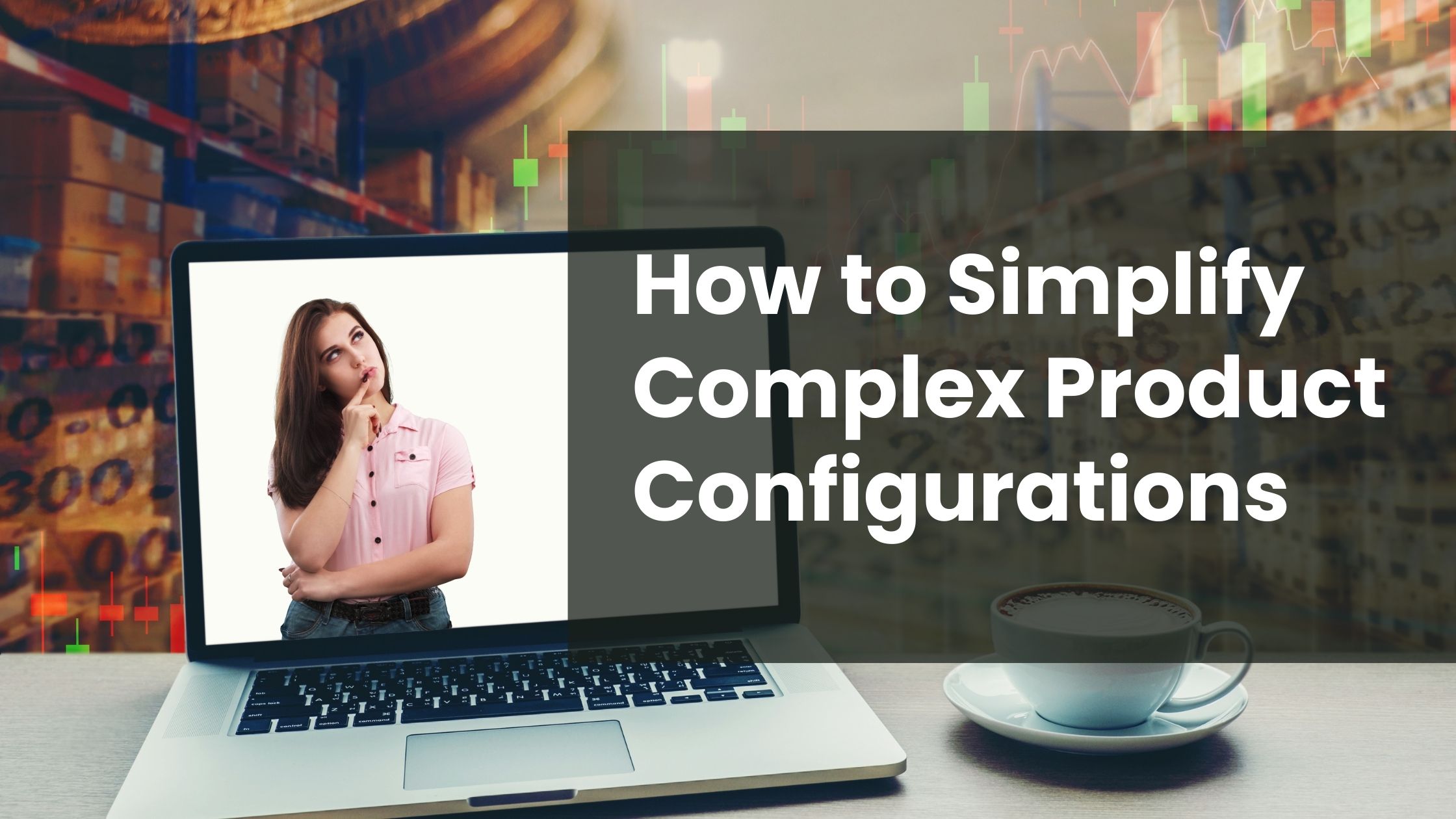In the current fast-evolving business landscape, customers increasingly demand personalized solutions that address their specific requirements. For organizations that offer a wide range of products and utilize complex pricing structures, the task of delivering tailored solutions in a timely and precise manner poses significant challenges. In this context, Salesforce CPQ (Configure, Price, Quote) emerges as a critical tool. Salesforce CPQ helps businesses manage complicated product configurations, make sales processes smoother, and improve the customer experience. In this blog, we will look at what complex product configurations are, their main features, how Salesforce CPQ makes them easier to handle, and more.
What is Complex Product Configurations?
Complex product configuration is the process of assembling products or services that consist of multiple interdependent components, customizable features, or variable pricing models. These are not standard, off-the-shelf products; instead, they are configurable offerings that must be tailored to meet the buyer’s specific requirements.
For instance, a tech firm providing enterprise software could present various modules, user-based licenses, deployment strategies, and service-level agreements. It’s essential to configure all these choices accurately to guarantee compatibility and accurate pricing.
Common characteristics of complex product configurations include:
-
Multiple configurable options or features
-
Conditional or dependent relationships between components
-
Dynamic pricing based on selections
-
Regulatory or contractual restrictions
- Long product configuration and quoting cycles
Managing these variables manually is time-consuming and error-prone. Sales representatives often need to consult product managers or engineers, resulting in delays, frustration, and potential revenue loss.
Key Features of Complex Product Configurations
To successfully manage Complex Product Configurations, businesses need tools that support the following features:
1. Product Bundling
Organizing Complex Product Configurations into logical bundles can enhance the purchasing experience by grouping items that are commonly sold together. These bundles may contain required components that are essential for the primary product, optional accessories that add value or functionality, or mutually exclusive items that serve as alternatives to each other. This approach simplifies decision-making for customers and can boost overall sales.
2. Dependency Management
It is important to select only compatible woocommerce configurable product when configuring a system. To avoid invalid configurations, implementing rules and conditions can help ensure that all selected items work together seamlessly.
3. Guided Selling
Implement a question-and-answer format to assist sales representatives in effectively navigating the product catalog, allowing them to narrow down the options to relevant choices.
4. Configuration Rules
Implementing rules during the configuration process can significantly enhance user experience by allowing for the inclusion, exclusion, validation, or notification of users. This approach minimizes the dependence on manual knowledge, streamlining the entire process and ensuring greater accuracy and efficiency.
5. Real-Time Validation
To enhance accuracy, it is essential to validate configuration choices in real-time. This process allows for the automatic removal or correction of any invalid options, thereby preventing errors before they occur.
Here are one of the best plugin : woocommerce configurator plugin
6. Attribute-Based Configuration
To effectively assist customers, it is essential to gather detailed input regarding their specific needs, including dimensions, capacity, and power output. This information can then be analyzed to identify the most suitable options available.
7. Dynamic Pricing
It’s important to adjust pricing according to various factors such as configuration options, applicable discounts, or specific terms set for individual customers. This approach ensures that pricing is tailored to meet the unique needs of each situation.
Read Our Blog Here : Online Product Configurator here.
The Benefits of Simplified Complex Product Configurations
Here are some benefits that helps in Simplifying complex product configurations with Salesforce CPQ:
– Faster Quote Generation
Sales representatives can now produce precise quotes in just minutes rather than taking days. This efficiency not only shortens the sales cycle but also enhances conversion rates, streamlining the overall sales process.
– Improved Accuracy
Configuration and pricing rules play a crucial role in ensuring that incompatible selections are avoided, thereby reducing the likelihood of misquotes and pricing errors. This, in turn, minimizes the need for reworking orders, streamlining the overall process.
– Higher Sales Efficiency
Guided selling provides valuable assistance to new sales representatives, enabling them to navigate intricate products without needing extensive technical support. This approach empowers the sales team by enhancing their confidence and effectiveness in selling complex offerings.
– Scalable Product Management
As your product portfolio expands, a Configure, Price, Quote (CPQ) system helps maintain scalability while keeping operational complexity to a minimum. This ensures that managing a larger range of products remains efficient and straightforward.
– Enhanced Customer Experience
Customers are provided with quick and accurate customized quotes, which enhances their satisfaction and helps to build trust in the service.
– Consistent Pricing and Discounting
Automated price calculations provide a reliable way to maintain consistent profit margins while preventing excessive discounts. This approach ensures pricing strategies are adhered to effectively, leading to improved financial outcomes.
– Better Collaboration
Centralized rules and automation can enhance collaboration among sales, finance, and engineering teams, leading to more efficient workflows and improved communication.
How to Simplify Complex Product Configurations with Salesforce CPQ
Salesforce CPQ (Configure, Price, Quote) is designed to effectively handle complex product configurations, streamlining the entire process from product selection to pricing and quoting. Here’s how it addresses the intricacies involved:
Guided Selling:
Salesforce CPQ employs guided selling techniques that assist sales representatives by offering step-by-step guidance through the configuration process. This feature helps users navigate complex product offerings, ensuring they select compatible options while minimizing errors. New sales personnel, in particular, can benefit from this support, increasing their confidence and effectiveness.
Dynamic Configuration Rules:
To manage complex combinations of products and services, Salesforce CPQ utilizes dynamic configuration rules. These rules automatically validate choices in real-time, preventing incorrect selections and ensuring that all Complex Product Configurations meet the specific requirements of the customer. This automated approach mitigates the risk of misquotes or compatibility issues.
Customizable Pricing Models:
Salesforce CPQ accommodates a wide range of pricing models, allowing businesses to implement customized pricing strategies. Whether it’s volume-based discounts, subscription pricing, or bundled products, the system can quickly calculate prices based on the selected Complex Product Configurations, ensuring that pricing is both accurate and aligned with the company’s objectives.
Automated Quote Generation:
As soon as the configuration is complete and pricing is determined, Salesforce CPQ swiftly generates quotes. This automation reduces the time spent on creating proposals, enabling sales teams to respond to customer inquiries promptly. Fast, accurate quoting contributes to a shortened sales cycle and improved conversion rates.
Integration with CRM:
Salesforce CPQ seamlessly integrates with other Salesforce products, providing a holistic view of customer data and preferences. This integration enhances the accuracy of product configurator and customer-specific pricing while allowing sales representatives to access critical insights that inform their selling strategies.
Scalability:
As businesses expand their product lines, Salesforce CPQ scales alongside them. The system is designed to accommodate new products, features, and configurations without adding unnecessary complexity to the management process. This scalability ensures that companies can grow their offerings while maintaining efficiency in their sales operations.
Collaboration Tools:
Salesforce CPQ includes features that promote collaboration among various departments, such as sales, finance, and engineering. Centralized rules and automated workflows help ensure that all stakeholders are on the same page, leading to improved communication and more streamlined operations.
Enhanced Analytics and Reporting:
With powerful analytics tools, Salesforce CPQ allows businesses to analyze sales performance, pricing strategies, and product configurations. This data-driven approach aids in identifying trends, optimizing pricing models, and fine-tuning product offerings for maximum impact.
Conclusion
In a competitive and customer-driven world, businesses can’t afford slow, manual, and error-prone sales processes. Salesforce CPQ simplifies complex product configurations by turning intricate product offerings into easy-to-use, rule-driven configuration workflows. WP Configurator empowers sales teams, improves customer satisfaction, and accelerates revenue generation.
Whether you’re selling physical products with multiple components or digital services with customizable modules, Salesforce CPQ gives your team the tools to configure accurately, price competitively, and quote efficiently.
If your business is looking to streamline product configuration and improve quote accuracy, Salesforce CPQ may be the ideal solution. WP Configurator helps in trusting the Salesforce implementation company to make the most of this powerful tool.
Frequently Asked Questions (FAQs)





